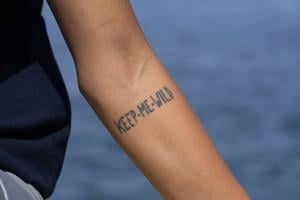MARINA DI RAVENNA, Italy (AP) — On a crisp morning off the coast of Marina di Ravenna, the Adriatic Sea glistens under the sun as marine biologist Linda Albonetti stands in a gently bobbing boat. Reaching into a plastic tub, she hefts out a sizeable loggerhead turtle and eases it over the side. The rehabilitated turtle — dubbed “Vulcano” — flaps her flippers energetically as she enters the azure waters and swims to freedom.
The release location is an unlikely haven: an area of methane extraction platforms symbolizing industrial intrusion in the turtles’ habitat. But since fishing is prohibited in the area, it’s a safe place to release turtles after they are treated at the (CESTHA). The center works to rescue and care for animals injured by trawlers and says its work has benefited more than 300 sea turtles, nearly 700 seahorses, more than 100 sharks and hundreds of thousands of cuttlefish in the past decade.

Loggerheads are found in seas and oceans around the world. In the Adriatic, they are concentrated in the north, a critical feeding ground that overlaps with trawling nets that can trap them underwater. Most of the sea turtles brought to CESTHA arrive with lung problems, though some others have more severe injuries from boat propellers or fishing hooks, Albonetti said.
“Human beings have an impact on natural resources and can also have an impact on protecting them. We are all moved by this,” Albonetti, who sports a “Keep Me Wild” tattoo on her arm, sai.























